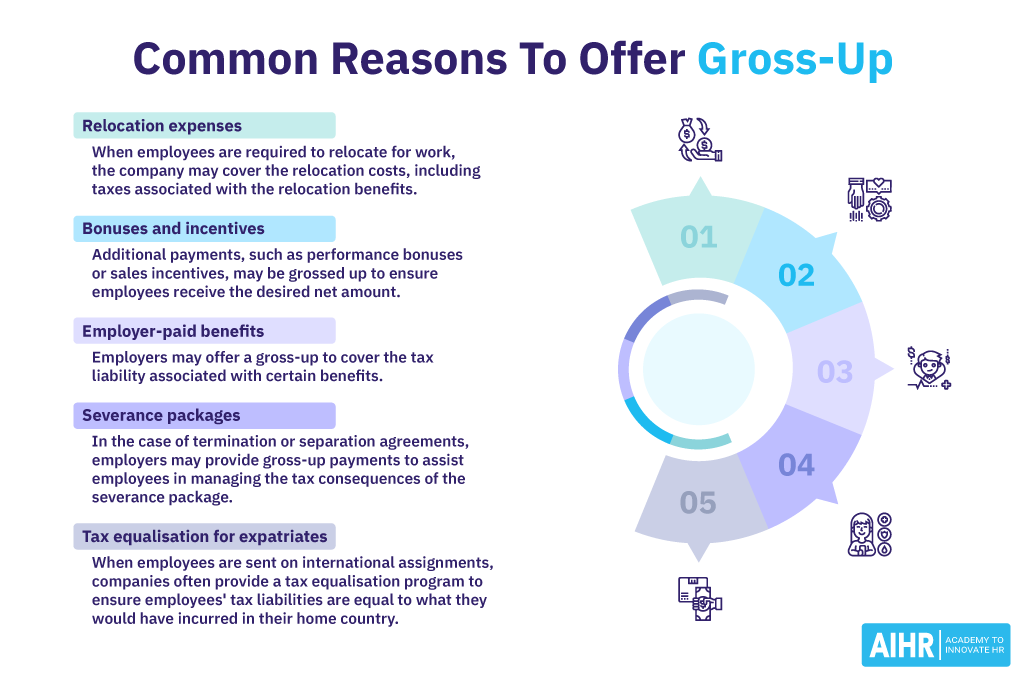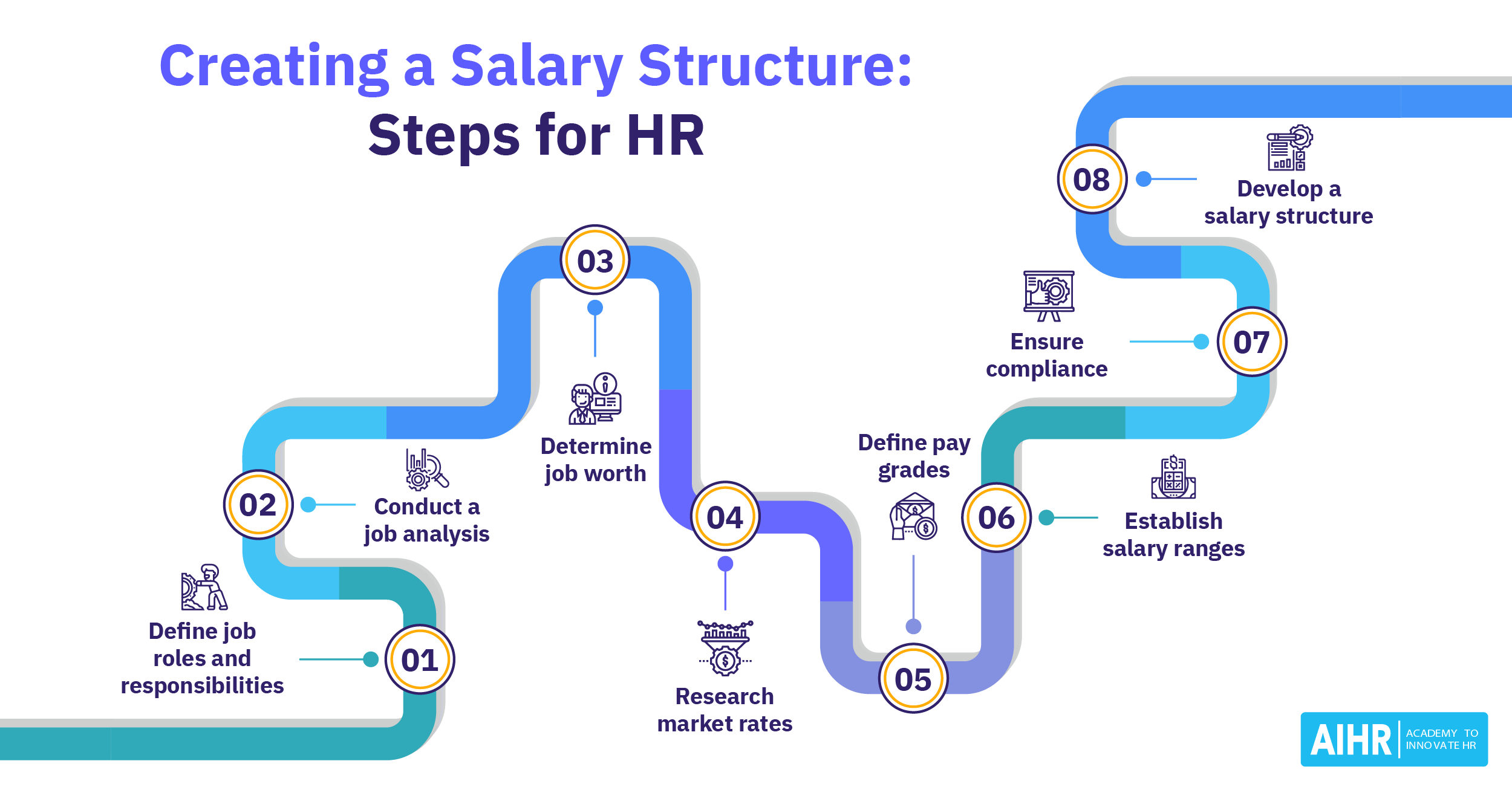Gross-Up
What does gross-up mean?
Gross-up refers to increasing an employee’s compensation to account for the taxes they will owe on that income. In simpler terms, it provides employees with a net pay amount after accounting for taxes.
The grossed-up amount is calculated by adding the estimated tax amount to the employee’s base salary or wages. By doing so, employers ensure that employees receive the intended net pay, even after deducting taxes.

When would employers offer a gross-up?
Employers may offer a gross-up in various scenarios to mitigate the financial impact of taxes on employees. Here are some common reasons why employers choose to offer a gross-up:
- Relocation expenses: When employees are required to relocate for work, the company may cover the relocation costs, including taxes associated with the relocation benefits.
- Bonuses and incentives: Additional payments, such as performance bonuses or sales incentives, may be grossed up to ensure employees receive the desired net amount.
- Employer-paid benefits: Certain benefits, such as car allowances or housing allowances, may be subject to taxes. Employers may offer a gross-up to cover the tax liability associated with these benefits.
- Severance packages: In the case of termination or separation agreements, employers may provide gross-up payments to assist employees in managing the tax consequences of the severance package.
- Tax equalization for expatriates: When employees are sent on international assignments, companies often provide a tax equalization program to ensure employees’ tax liabilities equal to what they would have incurred in their home country.
HR tip
Implementing a gross-up for taxes policy requires a thorough understanding and expertise in tax regulations. Collaborate with finance or tax professionals to ensure accurate calculations and compliance.
| Advantages of gross-up | Disadvantages of gross-up |
|---|---|
| Ensuring employees receive intended net pay: Grossing up salaries or benefits guarantees that employees receive the net amount originally intended for them, eliminating any surprises or financial hardships | Increased administrative complexity: Implementing a gross-up policy adds complexity to payroll and HR processes. Calculating accurate gross-up amounts and ensuring compliance with tax regulations can be time-consuming and resource-intensive |
| Demonstrating fairness in compensation practices: Gross-up policies promote transparency and fairness in compensation by considering the impact of taxes on employees’ take-home pay. This helps in fostering a positive employer-employee relationship. | Higher costs for employers: Grossing up compensation means the employer is responsible for covering the tax liability of employees. This can lead to increased costs for the company, particularly in cases where gross-up is offered for various benefits or bonuses. |
| Simplifying payroll administration: By incorporating tax gross-up calculations, payroll administration becomes streamlined as the burden of calculating and managing tax liabilities falls on the employer. | Potential for misinterpretation or confusion: Tax gross-up calculations involve intricate tax considerations, and there is a risk of misinterpreting tax rules or applying incorrect rates. This could lead to errors in the gross-up calculation and potentially impact employees’ net pay. |
Gross-up methods
There are three common methods used for gross-up for taxes calculations:
- Flat method: In this method, a flat tax rate is applied to the grossed-up amount to calculate the tax liability.
- Supplemental inverse method: The supplemental inverse method calculates the grossed-up amount by dividing the net pay by the inverse of the tax rate.
- Marginal inverse method: The marginal inverse method determines the grossed-up amount by dividing the net pay by the difference of one and the tax rate.
How to do a gross-up calculation
To calculate gross-up using the flat method, follow these steps:
- Determine the employee’s base salary or wages.
- Identify the applicable tax rate.
- Divide the tax rate by 100 to convert it into a decimal.
- Add 1 to the tax rate decimal to get the gross-up factor.
- Divide the base salary or wages by the gross-up factor to calculate the grossed-up amount.
For example, if an employee’s base salary is $50,000 and the tax rate is 30%, the gross-up factor would be 1.3 (1 + 0.3). Dividing $50,000 by 1.3 would give a grossed-up amount of approximately $38,461.
HR tip
Regularly review and update your tax gross-up policy to align with changing tax laws and regulations. Stay informed about any updates that may impact your employees’ net pay.







